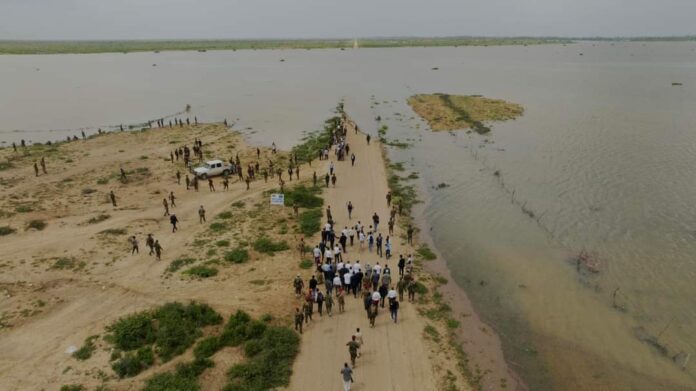Mogadishu, 30 November 2023 – Six months after Somalia emerged from a historic drought that pushed the country to the brink of widespread famine, another climate shock has struck as heavy rains and floods batter several areas of the country. Since October when the deyr rains started, over 2 million people have been affected by torrential rains, flash and riverine floods, with about one million people displaced from their homes and over 100 killed mostly in South West, Galmudug, Puntland, Hirshabelle, Banadir region and Jubaland states.
“Recurrent climate shocks, widespread insecurity and rampant poverty have pushed the people of Somalia to the breaking point,” said Mr. George Conway, Deputy Special Representative of the Secretary General, Resident and Humanitarian Coordinator in Somalia. “I am encouraged that humanitarian agencies are working closely with the authorities and communities to save lives in extremely challenging circumstances.”
The ongoing heavy rains and floods, exacerbated by El Niño and a positive Indian Ocean Dipole climate phenomena, are expected to swamp at least 1.5 million hectares of farmland land through December. Thousands of people have been cut off from markets and supplies or marooned in isolated villages. Roads, bridges and airstrips have been extensively damaged. Hospitals, schools and other vital facilities have been closed in some areas and the risk of cholera has spiked.
“The devastation is heartbreaking,” said Ms. Nimo Hassan, Director for Somali NGO Consortium. “The floods have reinforced the urgent need for sustainable solutions and disaster preparedness. Investing in flood-resistant durable solutions and early warning systems can save lives in Somalia.”
Authorities, communities and humanitarian actors have reached about 820,000 affected people with life-saving assistance, but needs are rapidly rising as the flooding expands across the country. Projections show that the heavy rains will continue in coming weeks which will sustain the flooding especially along the low-lying Shabelle and Juba riverine areas.
“The El Nino rains and floods have left thousands of families stranded,” said Mr. Mahamud Moallim, Commissioner Somalia Disaster Management Agency. “The priority right now is to rescue stranded families and provide immediate humanitarian relief to the victims.”
The devastation has come as millions of Somalis continue to battle hunger and malnutrition, with an estimated 1.5 million children under the age of 5 facing acute malnutrition between August 2023 and July 2024.
One month to the end of the year and despite massive needs, the 2023 Humanitarian Response Plan – which seeks more than US$2.6 billion to meet the priority needs of 7.6 million people – is only 42 per cent funded. Humanitarian actors cannot meet current and new needs unless they get additional resources.





